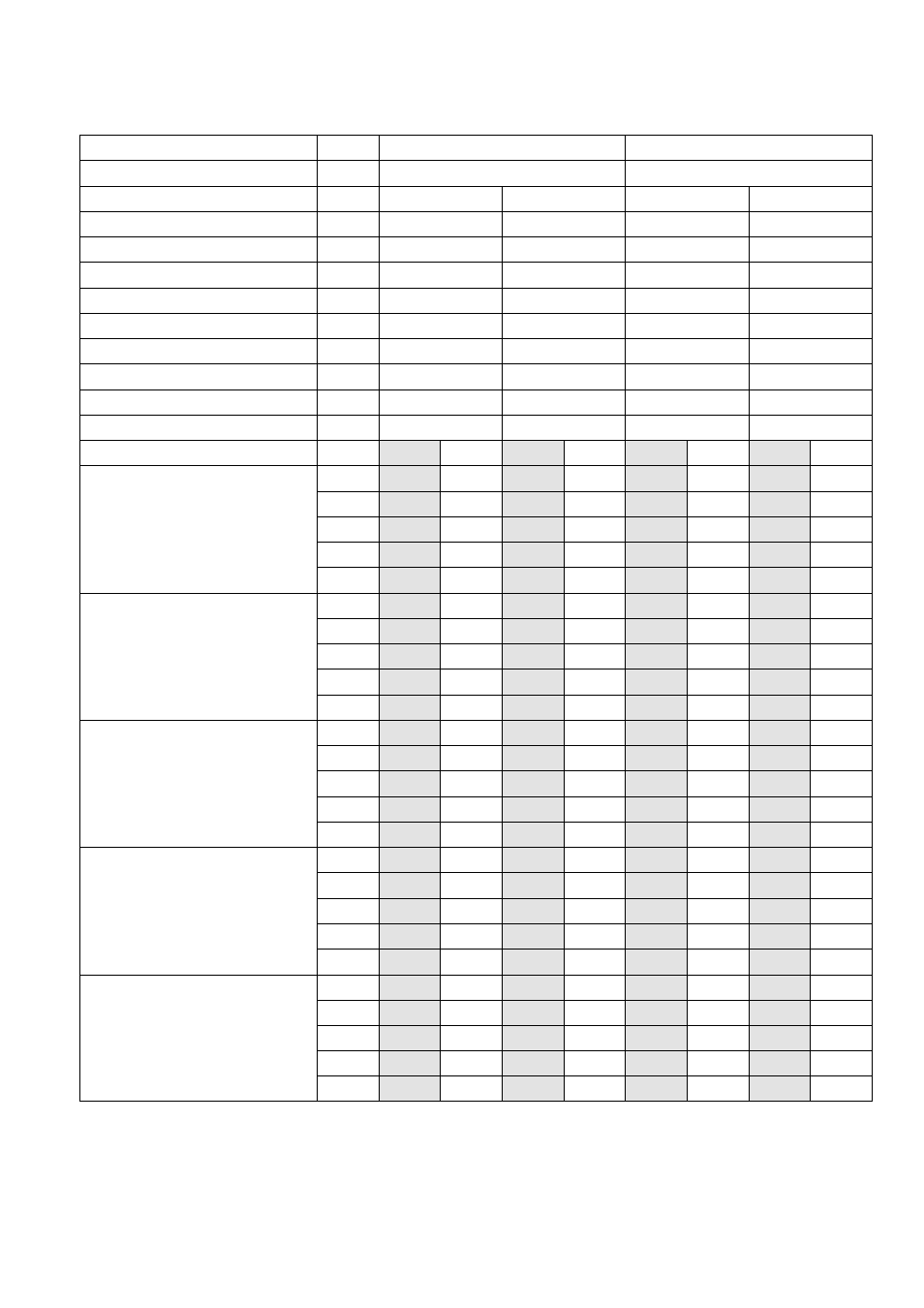50/40 °c, 60/50 °c, 70/50 °c – REMKO PWW 5000 User Manual
Page 9: 80/60 °c, 90/70 °c

9
Technical Data PWW 5402 / PWW 5602
2 steps
2 steps
Type
5402
5602
Speed
U/min.
670
500
660
500
Electrical connection
Volt
3 x 400
3 x 400
3 x 400
3 x 400
Frequency
Hz
50
50
50
50
Power consumption
kW
0,16
0,095
0,35
0,21
Rated current
A
0,38
0,19
0,78
0,39
Air capacity
m³/h
3470
2500
5500
4200
Sound pressure level L
pA
1m
1)
dB(A)
57
50
60
53
Max. heat projection range
m
4,0
2,9
4,6
3,4
Heating medium connection
inch
R 1“
R 1“
R 1“
R 1“
Weight
kg
39
39
46
Heating Medium
t
L1
°C
kW
t
L2
°C
kW
t
L2
°C
kW
t
L2
°C
kW
t
L2
°C
50/40 °C
0
19,9
18
17,0
21
27,1
15
24,1
17
5
17,4
21
15,0
23
23,6
18
21,1
20
10
14,9
24
12,8
26
20,2
22
18,0
23
15
12,4
27
10,8
29
16,8
25
15,1
26
20
9,9
29
8,7
31
13,6
28
12,2
29
60/50 °C
0
25,4
23
21,6
26
34,7
19
30,9
22
5
22,9
26
19,7
29
31,1
23
27,8
25
10
20,4
29
17,5
32
27,6
26
24,8
28
15
17,8
32
23,2
34
23,9
29
21,6
31
20
15,2
34
13,0
37
20,5
32
18,4
34
70/50 °C
0
25,3
22
21,7
26
27,1
15
24,3
17
5
22,8
26
19,9
29
24,0
19
21,4
21
10
20,3
29
17,8
32
20,9
22
18,6
24
15
17,6
31
15,7
35
17,7
25
15,8
27
20
15,6
35
13,7
38
15,0
29
13,1
30
80/60 °C
0
30,6
27
26,2
32
41,7
23
37,2
27
5
28,1
30
24,4
35
38,3
27
34,2
30
10
25,7
34
22,4
38
34,8
30
31,1
33
15
23,2
37
20,2
41
31,4
34
28,0
36
20
20,7
40
18,1
43
28,1
37
25,1
39
90/70 °C
0
36,1
32
30,9
37
49,5
28
44,0
32
5
33,7
35
29,0
41
45,9
31
40,9
35
10
31,2
39
25,9
*44
42,4
34
37,9
38
15
28,7
42
24,8
*47
38,7
38
34,7
41
20
26,2
*45
22,7
*49
35,3
41
31,7
*44
46
1) Noise measurement DIN 45635 - 01 - KL 3
2) t
L1
= incoming air temperature, t
L2
= outgoing air temperature
* For outgoing air temperatures above 42 °C a very strong thermal lift can form. The penetration depth of the warm air stream becomes shorter,
the cold air in the area where people are working cannot be adequately permeated and mixed by the warm air.
Temperature layers from bottom to top are the result. Pockets of cold air form in the area where people are working near the ceiling
Excessive buildup of heat (heat loss).
